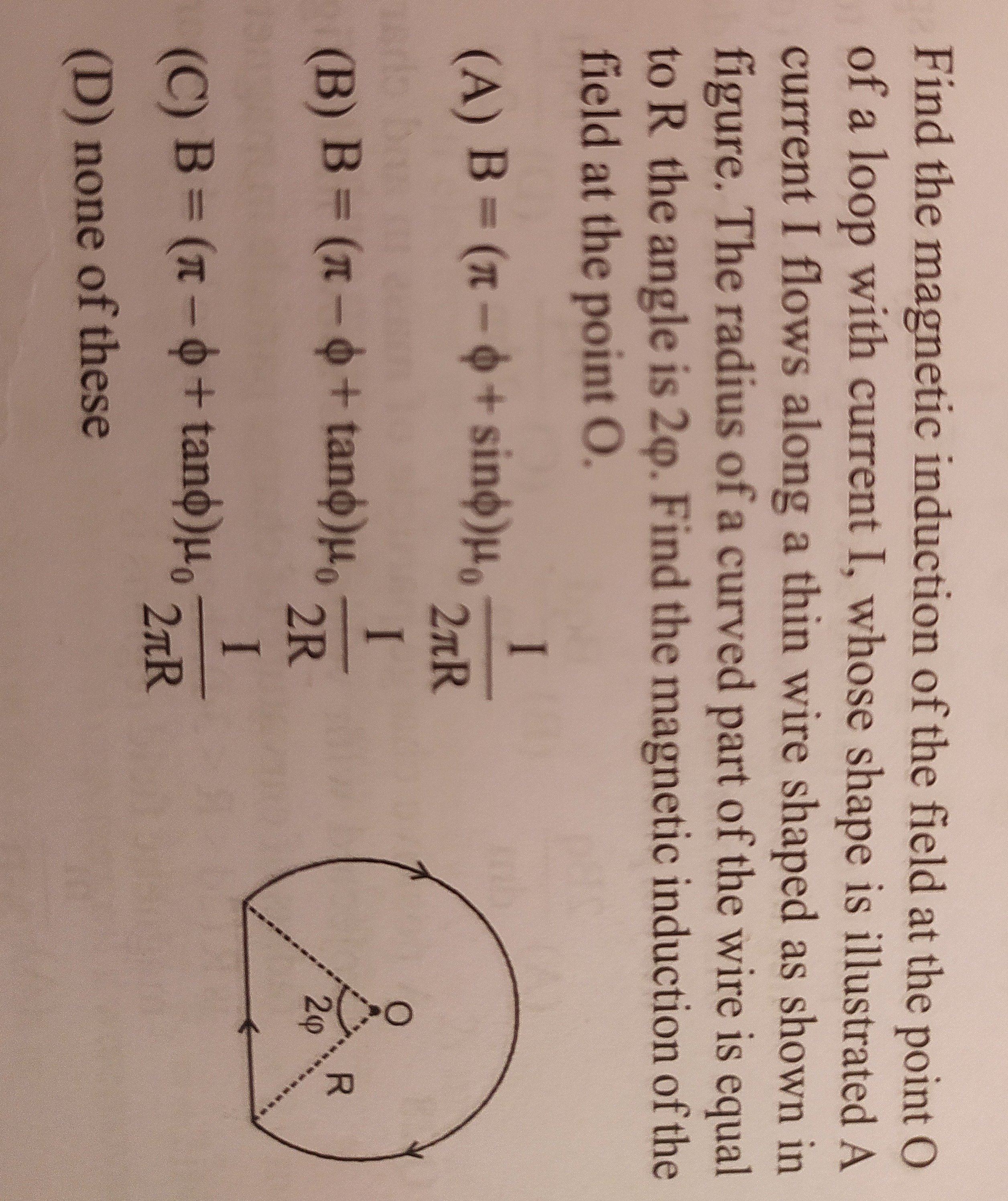Question
Question: A current I flows along a thin wire shaped as shown in figure. The radius of a curved part of the wi...
A current I flows along a thin wire shaped as shown in figure. The radius of a curved part of the wire is equal to R the angle is 2φ. Find the magnetic induction of the field at the point O.

Β = (π−φ+sinφ)μo2πRI
B = (π−φ+tanφ)μo2RI
B = (π−φ+tanφ)μo2πRI
none of these
none of these
Solution
The problem asks us to find the magnetic induction at point O for the given current loop. The loop consists of a circular arc and two straight wire segments.
- Magnetic Field due to the Circular Arc:
The figure shows a circular arc of radius R. The angle of the sector that is removed from the full circle is given as 2φ. Therefore, the angle subtended by the current-carrying arc at the center O is θ=2π−2φ radians.
The magnetic field at the center of a circular arc of radius R carrying current I and subtending an angle θ (in radians) is given by:
Barc=4πRμ0Iθ
Substituting the angle θ=2π−2φ:
Barc=4πRμ0I(2π−2φ)
Barc=4πRμ0I2(π−φ)
Barc=2πRμ0I(π−φ)
Using the right-hand thumb rule, if the current flows clockwise along the arc as indicated by the arrow, the magnetic field at O will be directed into the page.
- Magnetic Field due to the Straight Wire Segments:
The figure shows two straight wire segments extending from the ends of the circular arc to the point O. This means that the point O lies on the line of extension of both straight wire segments.
According to the Biot-Savart law, the magnetic field produced by a current-carrying wire at any point lying on the line containing the wire (either on the wire itself or on its extension) is zero. This is because the cross product dl×r becomes zero (since dl and r are parallel or anti-parallel).
Therefore, the magnetic field contribution from the two straight wire segments at point O is zero.
Bstraight=0
- Total Magnetic Field at O:
The total magnetic induction at point O is the vector sum of the magnetic fields due to all parts of the loop. Since all contributions are in the same direction (into the page), we can simply add their magnitudes:
Btotal=Barc+Bstraight
Btotal=2πRμ0I(π−φ)+0
Btotal=2πRμ0I(π−φ)
Our calculated magnetic field is B=2πRμ0I(π−φ). This result does not match options (A), (B), or (C) due to the presence of additional terms (sinφ or tanφ) or different denominators (2R instead of 2πR).
Therefore, based on the standard application of the Biot-Savart law and the interpretation of the given diagram, none of the options A, B, or C are correct.
